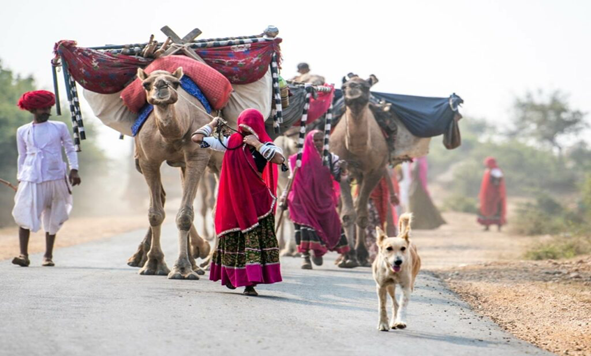Scheme for Economic Empowerment of Denotified, Nomadic, Semi-nomadic (SEED) Tribes
Context
Recently, the Union Social Justice Ministry received 402 applications online from across the country for benefits under the Scheme for Economic Empowerment of Denotified, Nomadic, Semi-nomadic (SEED) Tribes.
Scheme for Economic Empowerment of Denotified, Nomadic, Semi-nomadic (SEED) Tribes
- Scheme for Economic Empowerment of DNTs, SNTs &NTs (SEED) is an umbrella scheme for empowerment of these communities and accordingly, formulated with four components that affect their livelihood.
- These four components are-
- To provide coaching of good quality for DNT candidates to enable them to appear in competitive examinations.
- To provide Health Insurance to them.
- To facilitate livelihood initiative at community level; and
- To provide financial assistance for construction of houses for members of these communities.
- The Ministry has been allocated 200 crore for this scheme to be spent over five financial years from 2021-22 to 2025-26.
|
Portal
|
Who are DNTs?
- The term ‘De-notified Tribes’ stands for all those communities which were once notified under the Criminal Tribes Acts, enforced by the British Raj between 1871 and 1947.
- These Acts were repealed by the Independent lndian Government in 1952, and these communities were “De-Notified”.
- A few of these communities which were listed as de-notified were also nomadic.
Who are nomads and semi-nomads?
- Terms such as nomads and semi -nomads are applied to social groups who undertook a fairly frequent, usually seasonal physical movement as part of their livelihood strategy in the recent past.
- The term semi-nomad is mostly used to describe those sections of nomads whose duration, distance and frequency of movement is comparatively less than others.
- The distinction between nomads and semi-nomads does not involve distinguishable ethnic categories or social groups, it rather describes the degree of mobility practiced by them.
Status of these tribes in India
- It has been estimated that South Asia has the world’s largest nomadic population.
- In India, roughly 10 percent of the population is Denotified and Nomadic.
- While the number of Denotified Tribes is about 150, the population of Nomadic Tribes consists of about 500 different communities.
- Denotified Tribes have almost settled in various States of the country, the Nomadic Communities continue to be largely nomadic in pursuit of their traditional professions.
Various Committees Set up for Empowerment of DNTs
|

